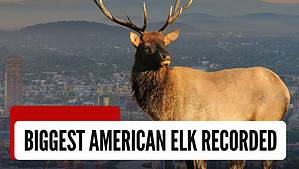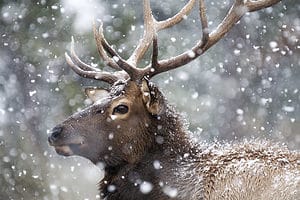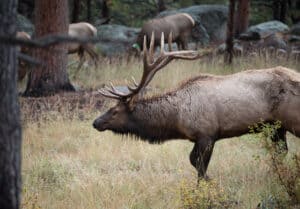Key Points:
- Adult male elk can run at up to 40mph and jump 8 feet vertically.
- Elks are excellent swimmers with lots of experience crossing swollen rivers during migration routes.
- Bears can swim, although they aren’t great at it. Their bulk and dog-paddle swim style use up too much energy to sustain for long.
This is a fascinating, albeit half-hearted, attempt by a grizzly to bring down an injured elk that ultimately ends in failure. So, let’s analyze exactly what is going on in this short video.
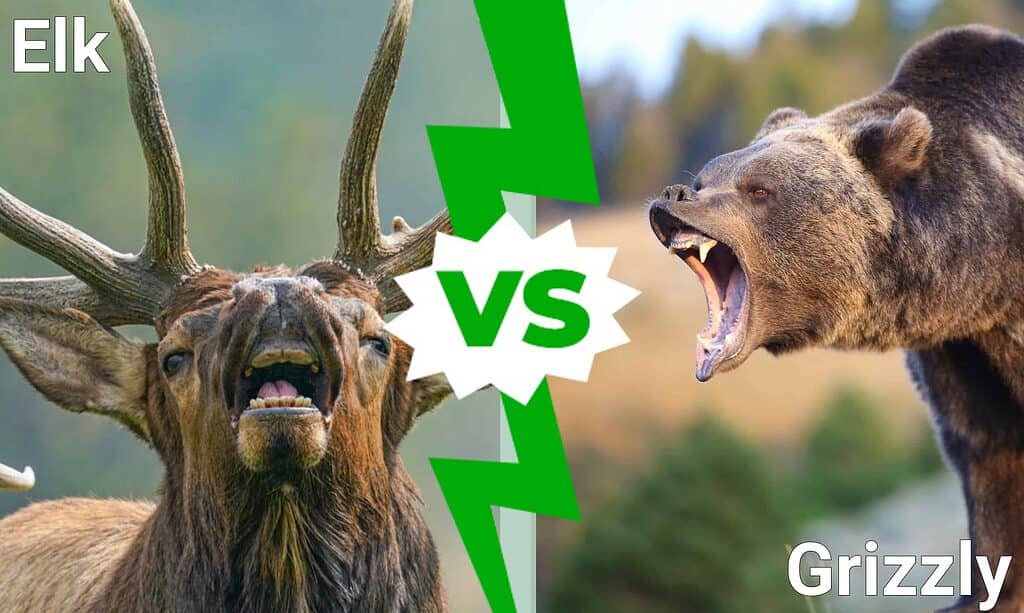
Grizzlies Hunting Elk
Grizzly bears are opportunistic feeders and are fairly versatile when it comes to sourcing their meals. They are omnivores, and their digestion can cope with both plant and animal sources of nutrition. Most bears have a predominantly vegetarian diet. They like to snack on berries and fruits as well as shoots and roots. However, they do also need some meat in their diet, which can come from insects, small mammals, and fish. Bears will also occasionally tackle a larger animal, and this is what this grizzly is attempting to do.
Chasing down a fit adult elk would be a challenge for a grizzly as elk are large animals that can run fast. A calf or an ill or injured elk would be easier and would involve less effort from the bear. Despite the fact that this elk is injured (we are told that in the video notes), they still manage to keep running as the bear lunges at them. The elk has enough strength to drag the bear towards the river. This particular river is very fast flowing, and the bear makes a split-second decision to release the elk and climb back to the safety of the river bank.
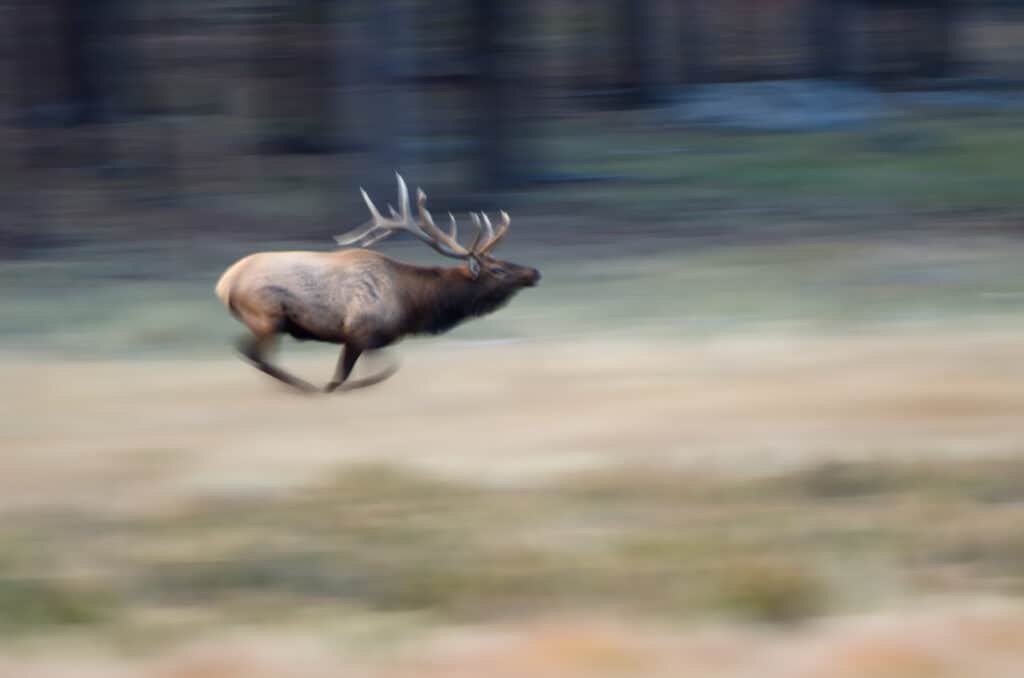
Adult male
elk
can run at up to 40mph and jump 8 feet vertically.
©Agnieszka Bacal/Shutterstock.com
A Grizzly Bears Normal Diet
Grizzly bears are omnivorous, and their diet varies greatly depending on the season and availability of food sources. In summer months, grizzlies tend to forage for roots, berries, grasses, sedges, fungi, and insects, as well as scavenging carcasses left behind by other animals. During this time, they may also hunt smaller mammals such as ground squirrels or marmots.
In the fall, when salmon runs occur in coastal areas, grizzlies feed heavily on fish. While inland, they will preoccupy themselves with consuming nuts from pine cones or feeding on army cutworm moths or whitebark pine nuts.
When winter arrives, grizzlies switch to a more carnivorous diet which consists mainly of elk calves but can also include deer fawns and moose calves if available in their environment. While hunting larger prey is not common among grizzlies, it does occasionally happen when there is an abundance of meat sources around them during certain times of the year, particularly springtime when ungulates have just given birth to young ones.

Grizzlies and Elk as Swimmers
It’s interesting to watch the decisions that these two animals make. Adult male elk can run at up to 40mph and jump 8 feet vertically. Brown bears are one of their main predators, and elk use their athleticism to try to evade this threat. Elks are also excellent swimmers. They have hollow hairs and body fat that insulates them from cold waters. Their migration routes often require them to cross swollen rivers, which they learn to do as calves. A typical elk tactic is to head for a river when they are being pursued and, because of their amazing endurance, choose to stay in the water for some time. This elk decides that the water is safer than being on the land with the bear.
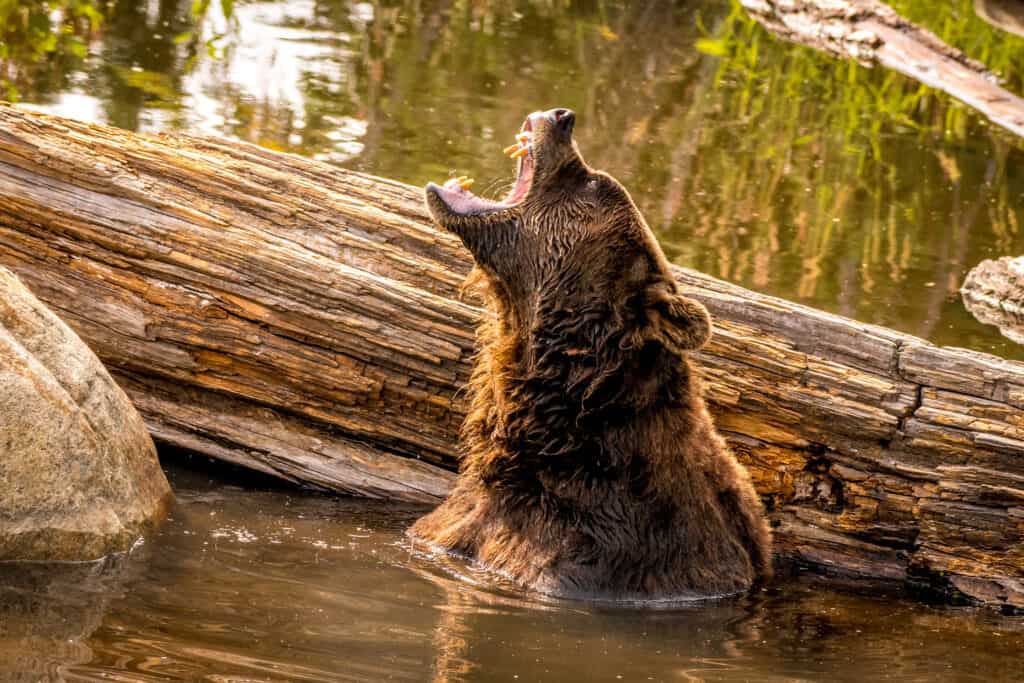
Because they are so big- it takes a lot of energy for a grizzly to swim.
©toseeg/Shutterstock.com
Brown bears can also swim, but they are not that keen on it. They use a doggy paddle-style stroke to propel themselves along, but their bulk means that it uses up a lot of energy, and they could not keep this up over long distances in rough water. You can see that this bear is eager to leave the water as quickly as possible, which is probably a wise choice!
The photo featured at the top of this post is © Mary Stample/Shutterstock.com
Thank you for reading! Have some feedback for us? Contact the AZ Animals editorial team.



